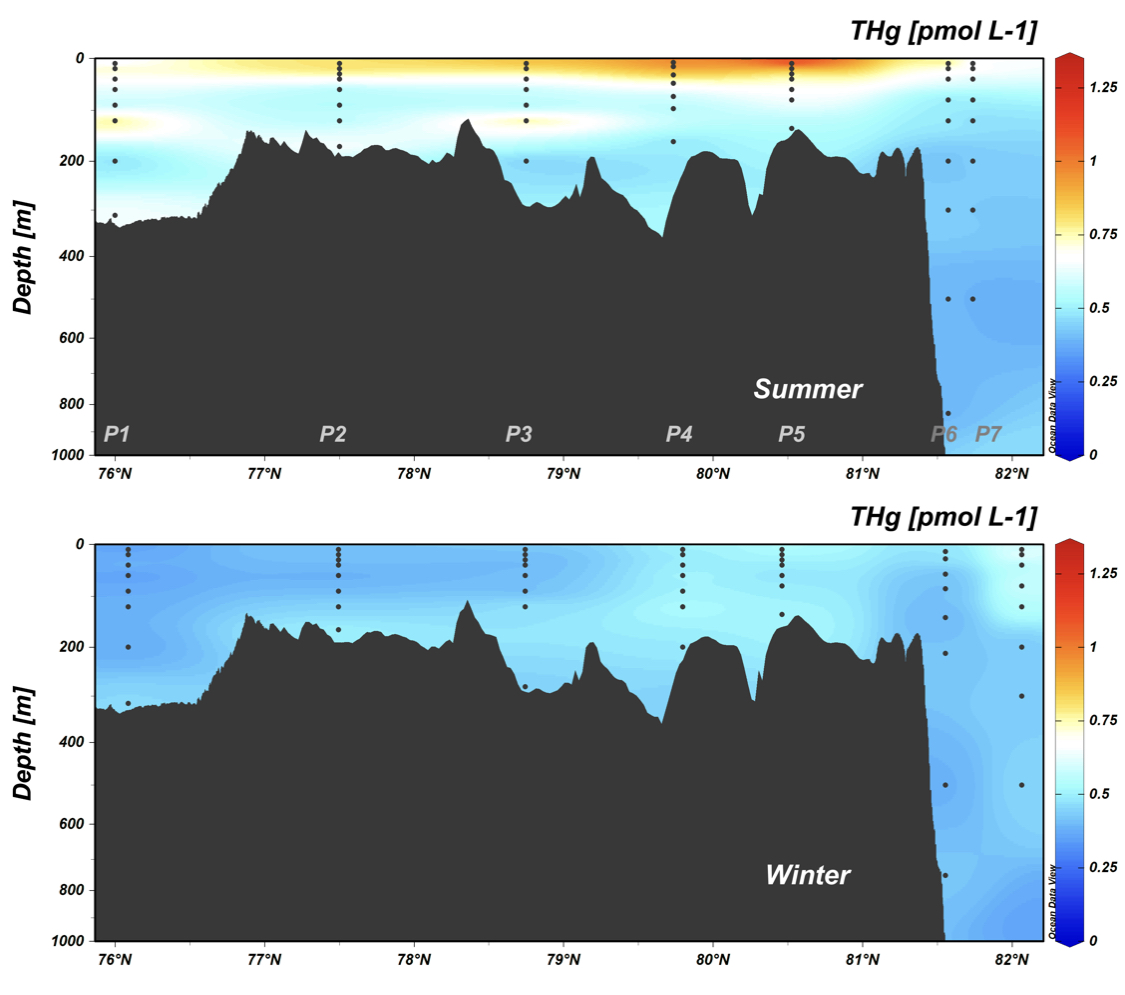Shedding light on Arctic Mercury
Arctic biota contain higher mercury levels than elsewhere. The Arctic Ocean is key to understand the drivers because bioaccumulating neurotoxin methylmercury is formed from inorganic mercury within the ocean itself. Based on the recent Arctic Monitoring and Assessment Programme (www.amap.no) and new observations, the mercury budget in the Arctic Ocean was revised (Dastoor et al, 2022). The revised Arctic Ocean mercury budget (~1,870 Mg) is lower than previous estimates (2,847–7,920 tons) and this implies a higher sensitivity to climate change and anthropogenic emissions. Particulate mercury settling (122 ± 55 tons per year) from surface waters to the shelf sediments is the largest mercury removal mechanism in the Arctic Ocean. The revised Arctic Ocean mass balance suggests that mercury burial in shelf sediments (42 ± 31 tons per year) may be underestimated by over 100% (52.2 ± 43.5 tons per year).
New research is now shining a light on mercury cycling on the Arctic shelf. On Arctic oceanographic cruises in August and December 2019, PhD candidate Stephen G Kohler and coworkers collected seawater samples for mercury, lead and manganese measurements. In the illuminated Arctic summer, surface seawater has elevated concentrations of mercury. As the seasons change and the Arctic descends into its long, dark winter, little is known about mercury and its behavior during the polar night. In a new publication, Kohler et al. (2022, see reference below) find that mercury concentrations on an Arctic Ocean shelf sea decrease about 33% from summer to winter. They propose an additional transport mechanism where manganese released from the shelf actively scavenges mercury from the water column. Methylmercury concentrations did not change with seasons. The persistent methylmercury concentrations are likely driven by a lower affinity for particles and the presence of gaseous species. The results update the current understanding of Arctic mercury cycling and require budgets and models to be reevaluated with a seasonal aspect. The residence time of methylmercury is longer (25 years) compared to inorganic mercury (3 years), and high methylmercury levels can be expected in the future.

References:
A Dastoor, H Angot, J Bieser, J Christensen, T Douglas, LE Heimbürger-Boavida, M Jiskra, R Mason, D McLagan, D Obrist, P Outridge, M Petrova, A Ryjkov, K St. Pierre, A Schartup, A Soerensen, O Travnikov, K Toyota, S Wilson, C Zdanowicz. Arctic mercury cycling. Nature Reviews Earth & Environment 3 : 270-286, (2022). 2022-03-22. https://www.nature.com/articles/s43017-022-00269-w – https://hal.archives-ouvertes.fr/hal-03619231
SG Kohler, LE Heimbürger-Boavida, MV Petrova, MG Digernes, N Sanchez, A Dufour, A Simic, K Ndungu, MV Ardelan. Arctic Ocean’s wintertime mercury concentrations limited by seasonal loss on the shelf. Nature Geoscience (2022). 2022-07-18. Access the paper: https://www.nature.com/articles/s41561-022-00986-3
